The road from Dades Valley and Todra to Skoura and Ouarzazate – Morocco
The road from Todra Gorges to the Dades Valley
Short Description. In the Todra Gorges, a gendarme encouraged me to continue the road trip to Tamtattouchte village. In the afternoon, I reached the Dades Valley, where I couldn’t take my eyes off the 1000 kasbahs built of reddish mud-bricks.
Long Description.
In the camping-ground, I had breakfast with my two Spanish neighbors who traveled with a camper-van and had two hunting dogs. En route to Todra Gorges, I passed many official camping-grounds and traditional guesthouses, and gradually reached the sinuous valley meandering among high cliff walls. Houses in the villages were simple rectangular volumes standing on the rocky ground and featuring squared small windows and rooftop terraces.
The section of deep, narrow gorges spanned only for a few hundred meters and was free of tourist crowds early in the morning. I slowly drove through the gorges, and then a vast mountain scenery gradually opened up. Cultivated plots and lush palm trees lined the valley here and there. The road winded along the river and immersed into the reddish mountains. Eventually, it narrowed down, and I wanted to turn back when I reached a barrier with ’Route Barree’ (Closed Road) written on it.
A car of the Royal Gendarmerie appeared out of blue and stopped behind my car. The gendarme asked me whether something happened to me. Then he added: ’Je suis ici pour la votre securite’ (I am here for your security!). I felt awestruck and stared at him. Then I explained to him I would have liked to go to Tamtattouchte village, 12 kilometers from there, but I stopped at the barrier. The gendarme checked another car, which then eluded the barrier and drove across the riverbed. After that, he encouraged me to continue the same way, through the river. Moreover, he assured me everything should be just fine.
I felt fear. However, I took a few deep breaths and passed the shallow water of the river with my rented car. The road was partially destroyed and under construction, but it continued through a hypnotizing reddish scenery. Enormous rocky walls flanked the road that gradually got lost in the overwhelming immensity of the desert. At each turn of the road, a different scenery opened up in front of my eyes as I continued to immerse myself in the Kingdom of the Atlas Mountains.
The road was a mixture of asphalt and gravel. I almost gave up and wanted to turn back twice when I had to cross through the riverbed again. I desperately stopped a German camper-van which came from the opposite direction and asked them about the condition of the road. The Germans encouraged me to continue with enthusiasm, though. They added that Tamtattouchte village was superbly surrounded by yellow cornfields in bloom.
I passed a small white mosque, then a herd of donkeys and goats. Eventually, I saw Tamtattouchte village on sight. The village featured mud-brick houses, surrounded by fields of maize and barren brown mountains. Berber people worked in the fields, and their donkeys were the only mean of transportation in the village. Hunchbacked women carried large bales of dried leaves from the fields to the village. I drove through the village, then reached a soccer field where children were playing joyfully. After I turned the car, I planned to leave Tamtattouchte. I was eager to get rid of the river crossings on my way back to the Todra Gorges.
When I was taking the last photo in Tamtattouchte, a smiling woman came from the maize field and invited me to have tea on her terrace at Auberge Café. Aicha served me sweet Moroccan tea, cookies, and a pear under a large Berber tent overlooking the blooming maize fields. She wasn’t able to write down her name as she had never been to school. However, we managed to communicate somehow. She had a married daughter who lived in a nearby town and two grandsons. After having tea, she led me to the maize field, where she worked every day. She picked up some corncobs to cook for me. When we came back home, I gave her some biscuits and waffles. Eventually, I told her I had to leave because I had a meeting in the Dades Gorges. She looked after me very disappointed.
In the Dades Gorges, Mohamed from Marrakesh had arranged a free room for me in a cozy hotel. I passed the town of Boumalne de Dades and entered the Dades Valley – also called the ‘Valley of the 1000 Kasbahs’. For the next 25 kilometers, I constantly stopped in front of each impressive, picturesque kasbah built of reddish mud-bricks. You could easily differentiate the kasbahs from the uniform mass of the brown-reddish villages.
The kasbahs had a more prominent volume, developed on several floors with geometric decorations and bordered with slightly detached defensive towers at corners. Alongside lofty minarets, imposing kasbahs silhouettes rose on hilltops or in the heart of green oases with fig, olive, or almond trees. The lunar-red scenery was barren but dotted with abundant, luxuriant oases here and there. Whenever I stopped, the children asked me to give them something. I did have something for them. However, they left disappointed when they felt the sour taste of my vitamin-C pills.
I was taking a break at the rock formation named the Monkey’s Fingers when Mohamed desperately called me and said the staff of the hotel was already waiting for me. I told him how much I liked the Dades Valley and that I would be late for sure. At Hotel Babylon de Dades, I had a Berber room overlooking the sheer valley, and the staff served me a delightful dinner at candlelight.
The road from the Dades Valley to Ouarzazate
Short Description. I drove one of the most dangerous roads in the world, the road through the Dades Gorges. In Kelaa M’Gouna, I witnessed how locals produced rosewater. I had lunch at a kasbah in the palmeraie in Skoura. In the evening, I camped between Berber tents and palm trees near Ouarzazate.
Long Description.
The last hairpin bends in the Dades Gorges are considered one of the most dangerous roads in the world. I drove slowly, with a maximum speed of 30 kilometers per hour, while Moroccans were overtaking me and talking on their mobile phone at the same time. At the end of the narrow road bends, I stopped at a panoramic terrace overlooking the entire Dades Valley. Then, I drove down all the Dades Valley to Boumalne de Dades. In the small town of Kelaa M’Gouna, I entered the distillery of Kadari Elhoucine. He showed me his rosewater distillery and other products made of roses. Eventually, he convinced me to buy soap, face cream, and jasmine perfume.
Skoura, also named the ‘Oasis of the 1000 palm trees’, featured an abundant combination of palm groves and mud-brick kasbahs built to protect the oases in the past. Monday was the souq day in Skoura, and peddlers were teeming the streets. Therefore, I had a hard time finding a parking spot on a side street after I sneaked among agitated crowds and animals.
Skoura‘s town center with a bustling market was full of dust and local stalls, and it didn’t inspire me to eat there. Also, in the new town, lunch was unreasonable pricey. Eventually, I immersed myself into the thicket of the palmeraie and entered Kasbah La Datte D’Or. There, I negotiated a decent lunch (tajine, olives, salad, dates, pomegranates, and grapes). In addition to that, I convinced them to tell me the correct way to Kasbah Amridil, which I hadn’t found at all on the maps.
Kasbah Amridil stood on the outskirts of Skoura, at the limit between desert and palmeraie. It had been built-up during the 17th century and was one of the largest and most coveted kasbahs in Morocco. It had several floors, intricate inner courtyards, and hidden terraces. Earth ovens for baking bread, old tools, olive oil press, and elaborated geometric decorations. The inhabitants of the kasbah slept on the ground on a mat which they rolled up each morning. In front of the kasbah, famished guides insisted on showing me the kasbah or the surrounding palmeraie. Anything, only to make little money.
After I passed the storage lake of El Mansour Eddahbi, I crossed Ouarzazate town. In the evening, I reached Camping Bivouac La Palmeraie, where I camped among camel-hair Berber tents, palm trees, and mud-brick huts.
If you want to read more about the road trip through Morocco, here are all the Travelogues from Morocco (x21).
Have you been to Morocco or plan to go there? Leave a comment below this post and tell me what you liked in Morocco or what you want to see there.
Want to subscribe to my travelogues? Just leave your email in the subscription form below, and you’ll be notified when I publish a new post.
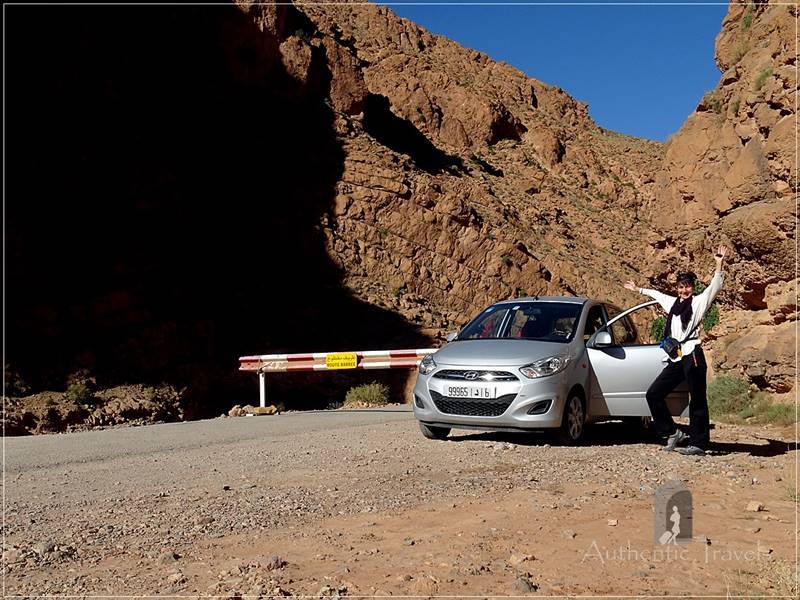
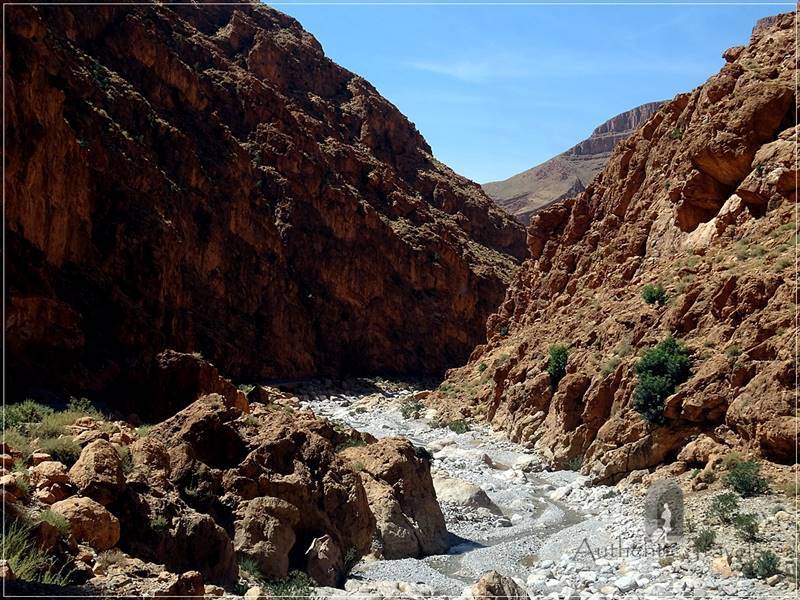

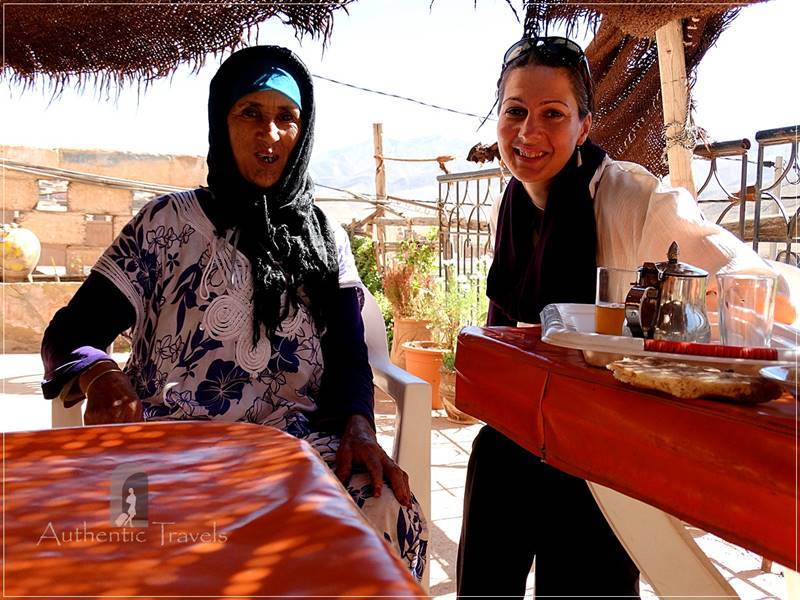
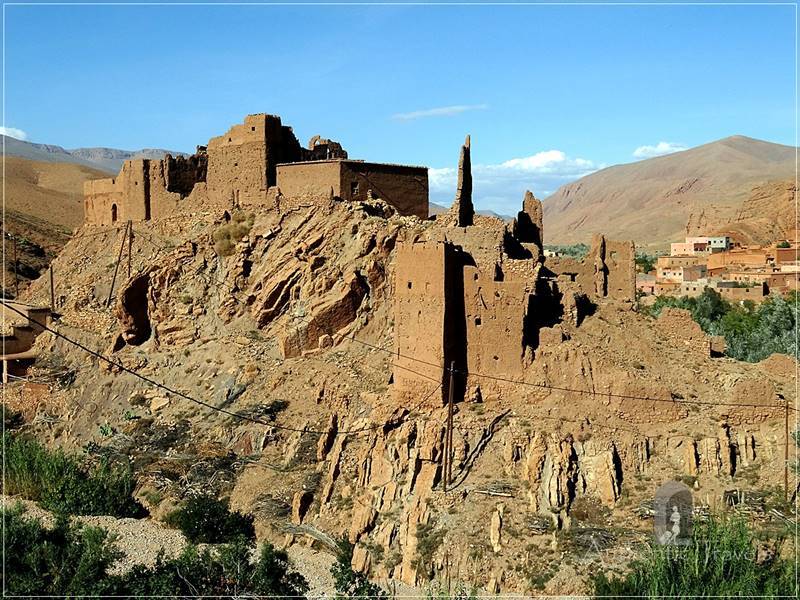
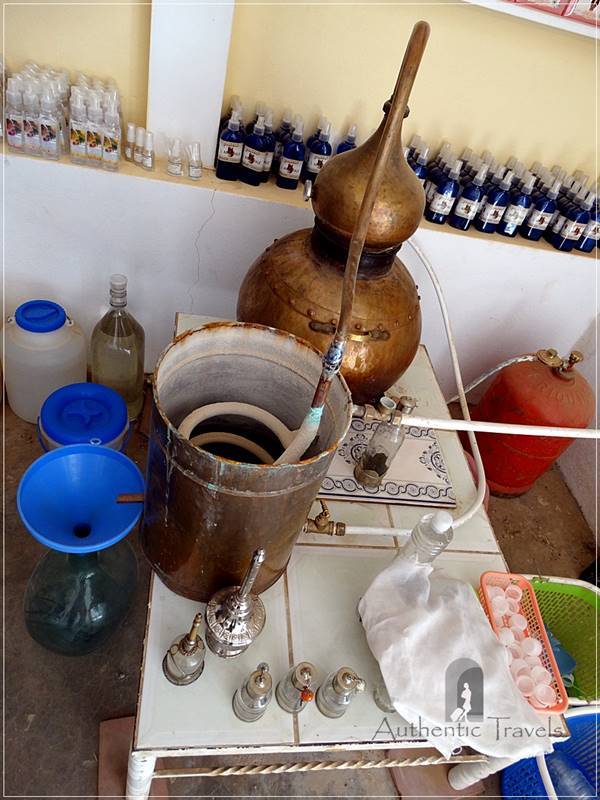
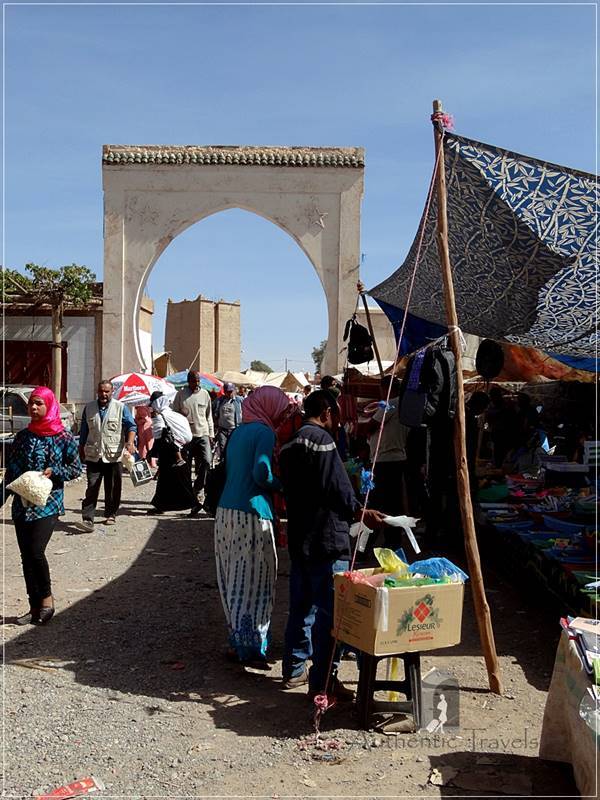
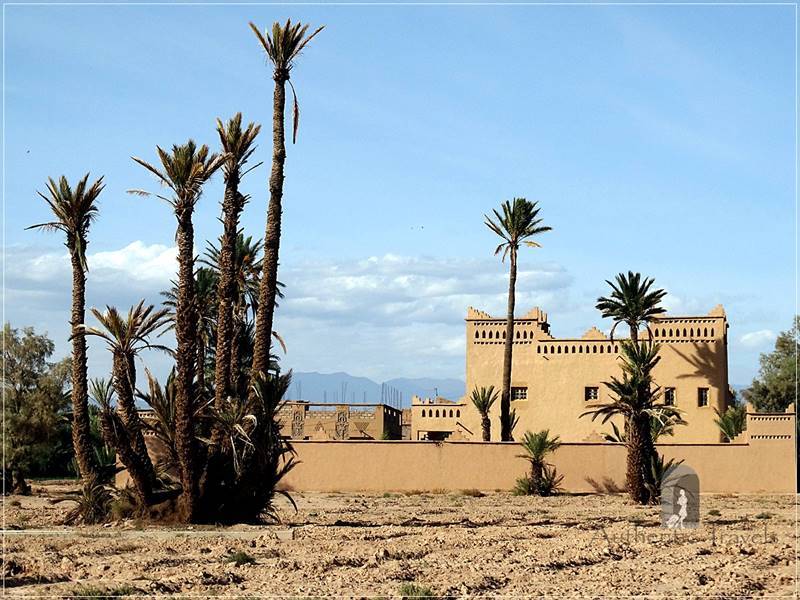
Aw it sounds like you had quite an adventure in this part of Morocco! It brings back good memories for me of driving around the Atlas Mountains. I think we might have also driven the Dades Gorge, I remember going so slowly on the bends in the road. The lady serving you tea was so kind!
Aisha was such a wonderful Berber woman, full of hospitality. I miss Morocco so much!
Sadly, in Morocco I didn’t get much beyond the walls of the major cities. I need to go back and check out some of the more unexplored spots!
That would be lovely !
I just loved the road trip story from Todra Gorges and Dades Valley to Skoura and Ouarzazate. This is something very new to me about Morocco. I am intrigued by the town center of the oasis of 1000 palm trees – Skoura. I would surely include these places in my Moroccan itinerary.
Morocco has many interesting and beautiful places. I’m afraid I can’t say I have my favorite one.
I’ve yet to explore that part of Morocco, but this certainly inspires me to do exactly that! That looks incredible!
Thank you Christopher
Wow! This sounds like an incredible way to spend some time exploring morocco! I am glad to learn more about this area
The most beautiful experiences happen unexpectedly !
Love all the views you got especially in the Todra and Dades Gorges! What a beautiful area of Morocco. I definitely want to explore the city of Ouarzazate when we return. To think so many people live out there in such a desert like area yet thrive. Such an amazing world we live in.
Most of them sleep on the ground, on a simple mattress, so they are pretty adapted to the area
I loved hearing about your time with the old lady from the field. Moments like that, when you each share food, and then, you also get to see and experience a little bit of a locals life, is a fantastic way to experience a new culture.
Aicha was fantastic ! However, I think she wanted me to stay at her small hotel …
I am amazed at the various offbeat places you are taking me through your blogs of Morocco. The drive to Tamtattouchte village was really dangerous. I would have surely given up. Thanks to you for driving to such strange and new places like that village and also Dades Valley that look from other civilization, from other era.
These places still keep their authentic look. Hopefully Moroccan traditions are very strong so we will see them many years from now.